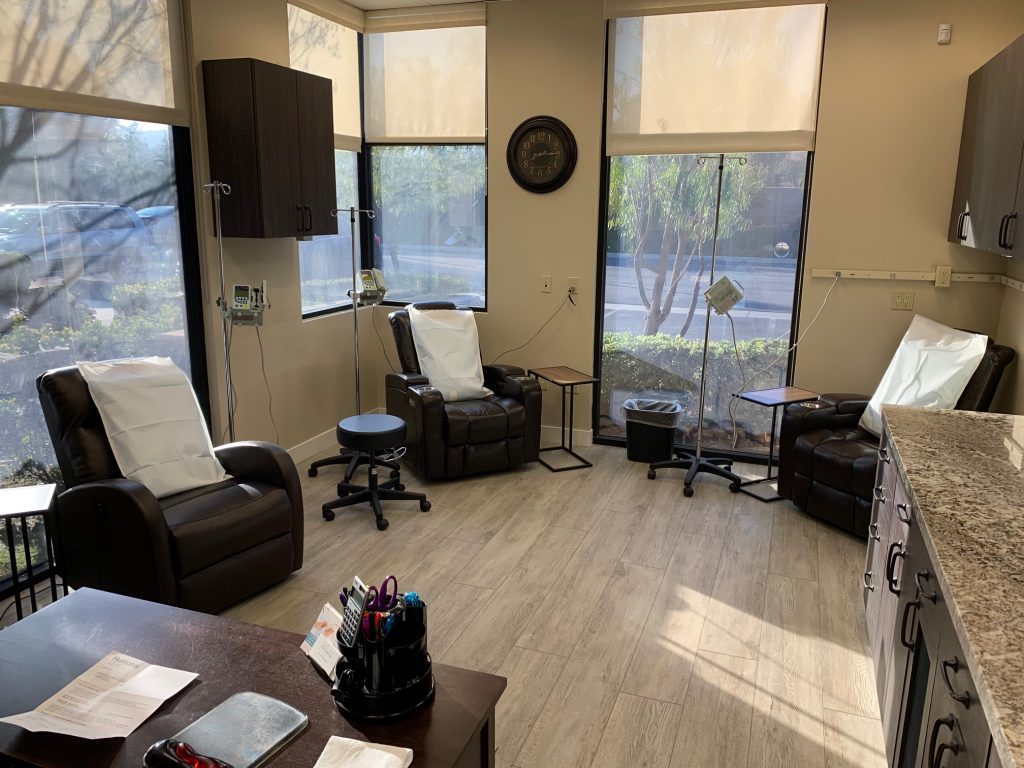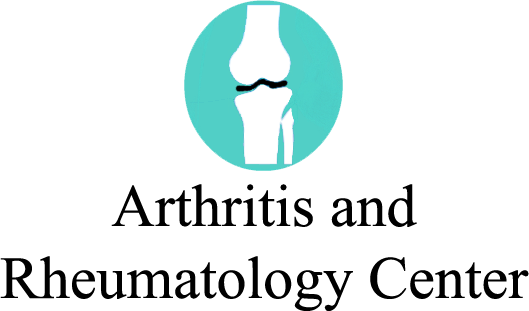 Ankylosing spondylitis (AS) is a type of arthritis that affects the spine. AS often involves redness, heat, swelling, and pain in the spine or in the joint where the bottom of the spine (sacrum) joins the pelvic bone (ilium).
Ankylosing spondylitis (AS) is a type of arthritis that affects the spine. AS often involves redness, heat, swelling, and pain in the spine or in the joint where the bottom of the spine (sacrum) joins the pelvic bone (ilium).
In some people, AS can also affect the shoulders, ribs, hips, knees, and feet. It can also affect areas where the tendons and ligaments attach to the bones. Sometimes it can affect the eyes, bowel, and very rarely, the heart and lungs.
To learn more about AS treatments, call or use the online scheduler to book an appointment.
Psoriatic arthritis can occur in people who have psoriasis (scaly red and white skin patches). It affects the joints and areas where tissues attach to bone. Symptoms of psoriatic arthritis include:
• Joint pain and swelling that may come and go. Joints may also be red and warm.
• Tenderness in the heel and bottom of the foot.
• Pain and stiffness in the neck and lower back.
• Joint stiffness, especially in the morning.
• Painful, sausage-like swelling of the fingers and/or toes.
• Thickness and reddening of the skin with flaky, silver white patches called scales.
• Pitting of the nails or separation from the nail bed.
• Tiredness.
• Pink eye or other eye infections.
To learn more about Psoriatic arthritis treatments, call or use the online scheduler to book an appointment.
Rheumatoid arthritis (RA) is a chronic (long-lasting) disease that mostly affects joints, such as the wrist, hands, feet, spine, knees, and jaw. In joints, RA causes inflammation that leads to:
• Pain.
• Swelling
• Stiffness.
• Loss of function.
Rheumatoid arthritis is an autoimmune disorder because the immune system attacks the healthy joint tissues.
Certain risk factors make it more likely for you to get rheumatoid arthritis. These include:
• Age. You can get RA at any age; however, the risk for getting RA goes up as you grow older.
• Sex. Rheumatoid arthritis is more common among women than men.
• Family history. If a family member has RA, you may be more likely to develop the disease.
• Smoking. People who smoke over a long period of time are at an increased risk of getting rheumatoid arthritis.
To learn more about Rheumatid arthritis treatments, call or use the online scheduler to book an appointment.
Osteoarthritis is a disease that damages the slippery tissue that covers the ends of bones in a joint. This allows bones to rub together. The rubbing causes pain, swelling, and loss of motion of the joint. Over time, the joint may lose its normal shape.
The condition can cause bone spurs to grow on the edges of the joint. Bits of bone or cartilage can break off and float inside the joint space, which causes more pain and damage.
Osteoarthritis occurs most often in older people. Younger people sometimes get the disease after joint injuries.
Osteoarthritis usually happens gradually over time. Some things that might make it more likely include:
• Being overweight.
• Getting older.
• Joint injury.
• Joints that are not properly formed.
• A genetic defect in joint cartilage.
• Stresses on the joints from certain jobs and playing sports.
To learn more about Osteoarthritis treatments, call or use the online scheduler to book an appointment.
Systemic lupus erythematosus (lupus) is a chronic (long-lasting) autoimmune disease that can affect many parts of the body, including the:
• Skin.
• Joints.
• Heart.
• Lungs.
• Kidneys.
• Brain.
Lupus happens when the immune system, which normally helps protect the body from infection and disease, attacks its own tissues. This attack causes inflammation and, in some cases, permanent tissue damage.
If you have lupus, you may have times of illness (flares) and times of wellness (remission). Lupus flares can be mild to serious,and they do not follow a pattern. However, with treatment, many people with lupus can manage the disease.
Anyone can get lupus, but women are more likely to get the disease than men. Most often it happens in people between ages 15 and 45 years.
To learn more about Lupus treatments, call or use the online scheduler to book an appointment.
Gout is a kind of arthritis that causes painful and stiff joints. Gout is caused by the buildup of crystals made of a substance called uric acid in your joints. It often starts in the big toe and can also cause lumps under the skin and kidney stones.
Gout causes pain in your joints, often in the big toe. Many people get their first attack of gout in one of their big toes, but it can also affect other joints in your feet, arms, and legs. In addition to pain, your joint may feel swollen, red, warm, and stiff.
In the early stages of gout, you may have attacks that start at night and come on suddenly. Intense pain and swelling may be bad enough to wake you up. Gout attacks are often triggered by stressful events, alcohol, drugs, or another illness.
Usually, a gout attack will get better in three to 10 days, even without treatment. After that, you may not have another attack for months or even years. Over time, however, your attacks may last longer and happen more often.
After a long period of time, such as 10 years or so, gout can sometimes advance and cause permanent damage to your joints and kidneys. With proper treatment, however, most people with gout do not have permanent damage.
To learn more about Gout treatments, call or use the online scheduler to book an appointment.
Osteoporosis is a disease that causes bones to become weak and brittle. This increases your risk of broken bones (fractures).
Osteoporosis is a “silent” disease because you may not have symptoms. You may not even know you have the disease until you break a bone.
Osteoporosis affects women and men of all races and ethnic groups. Osteoporosis can occur at any age, although you are at greater risk as you get older. For many women, the disease begins to develop a year or two before menopause.
To learn more about Osteoporosis treatments, call or use the online scheduler to book an appointment.
Stem Cell joint injection: The usual job of joint cartilage is to promote smooth movement of joint surfaces and protect bones from friction. This process allows for shock absorption of up to 20 times the weight of the body. It’s essential to physical movement, especially in athletics.
Osteoarthritis is one of the most common chronic degenerative disorders and it can affect any joint, causing deterioration of its joint cartilage over time.
Osteoarthritis can also begin as a result of a joint injury, such as a ligament tear, tendon damage, or a fracture.
In the face of damage, the joint becomes unstable and this wears down the articular cartilage. From there, the bone can suffer damage as well, in addition to the synovial joint lining, tendons, ligaments, and muscles.
Stem cell therapy for peripheral joints is minimally invasive. It’s a procedure that can decrease inflammation, slow and repair all these forms of damage from arthritis, and delay or prevent replacement surgery.
To learn more about Stem cell Joint injection, call or use the online scheduler to book an appointment.
Infusion Center
We infuse many medications including those related to Rheumatology such as novel biologic therapy. These medications are used to treat Rheumatologic diseases such as Rheumatoid arthritis and lupus, etc. Further more, we infuse several medications that are used to treat multiple sclerosis,, Crohn’s disease, ulcerative colitis, etc. Non-rheumatology medication are only infused based on the recommendation of patient’s own neurologist or gastroenterologist. Our infusion center is specious, equipped with WIFI access and TV
